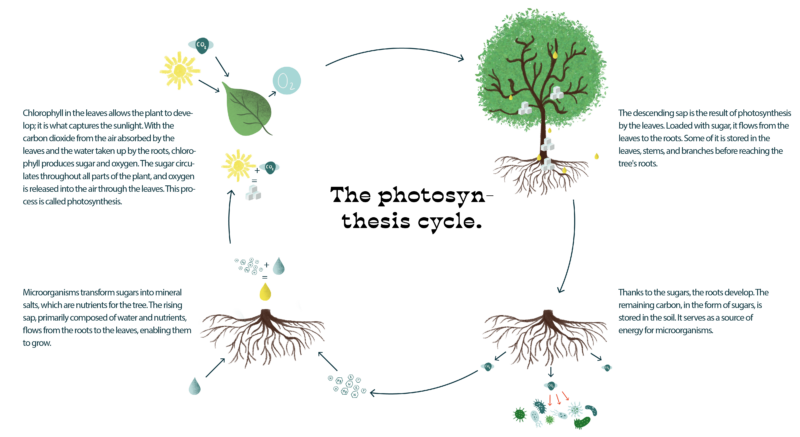Imagine you are at the bottom of Bellecoste’s Valat. You would feel a remarkable drop in temperature. It’s a sign of the health and balance of this place. This spring-fed gulch has been a place that has been providing sustenance, water, and shelter, as well as a steady climate for many animals and plants for hundreds of years. As the “green lung” of this peri-urban area, it plays a crucial role in preserving the environment, especially thanks to its continuous water source.
It stores a significant amount of carbon in the soil. An old tree has a better carbon storage capacity than a young tree. The more a tree engages in photosynthesis, the more it develops its leaves and roots, which in turn leads to increased photosynthesis. The larger the tree, the more carbon it stores. It’s the virtuous cycle of nature. As an ancient “valat” with numerous old trees, its ability to sequester carbon in the soil is very stable.
It reduces the vine’s water stress. Beyond the fact that the vines benefit from neighboring species living in the Valat, they also benefit from its humidity. When it gets too hot and the air is too dry, vines experience “water stress.” Just like for humans, the sensation of heat is more important for the plant than the actual temperature, and the air’s humidity created by the Valat reduces the stress experienced by the vines.

DID YOU KNOW?
A tree is made up of about 50% water and 25% carbon. A single tree absorbs an average of 10 and 40 kg of CO2 per year. This is equivalent driving from Marseille to Nîmes and back by car. Of course, the CO2 absorption capacity of each tree varies depending on things like its species, age, climate, sunlight, and the type of soil it’s rooted in.
To enter our website, you must be of legal drinking age in your country.